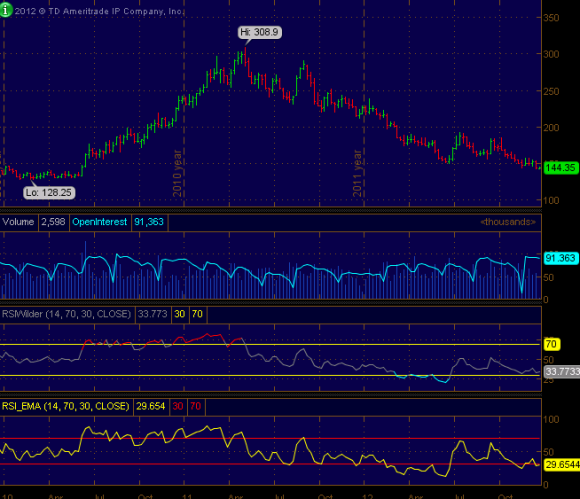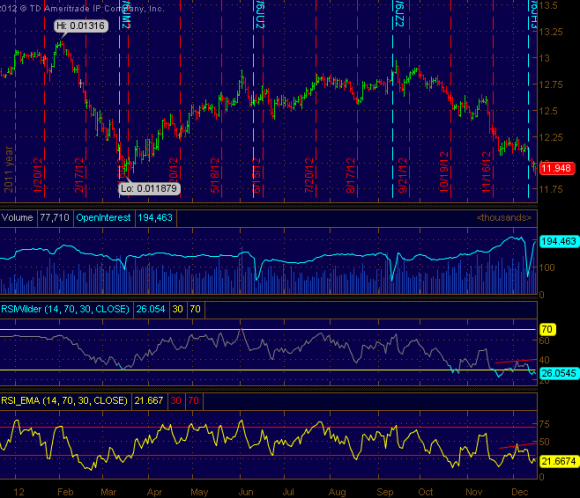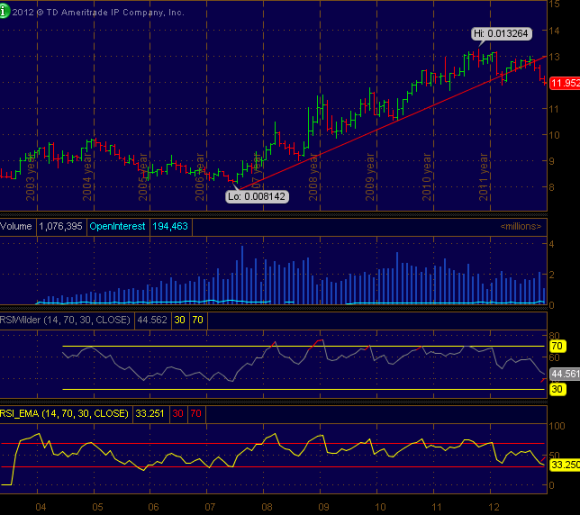We don’t really have waning strength yet on the hourly scale in SPX futures, but I can see the possibility. If this current rally leg (from Friday afternoon’s low around 1083) fails to break 1107 (Friday’s high) or does so on weaker RSI than the last rally, it will be a hint that the entire move up from 1036 is coming to an end. A fresh wave of selling will be even more probable if hourly RSI makes a lower low after a lower high.
Watch for weakening rallies and strengthening sell-offs to telegraph impending declines, even if prices are holding up (to be clear, we don’t have such weakening yet — I’m just watching for it). Prices often do stay elevated right up until a nasty break, like we saw from mid-April to early May (see chart below, ES 2-hour bar). You can also see the strengthening rallies and weakening declines since the bottom last week (the bottom was less strong than the preceding wave down, which is a classic buy signal).

–
Here’s the ES hourly. Still showing strength, but it would be bearish if this current wave does not get at least as powerful as the last.

–
And 15-min bar… this one shows weakness, but it’s too early in the wave to be sure.

All charts from TD Ameritrade
Today is a trading day for most of the world (and US futures are trading, though on a cut schedule), so don’t think that prices will wait for 9:30 EST Tuesday to make any important moves.
Remember, we have a rather neutral set of conditions on the daily chart, but the Elliott Wave crowd is looking for a hard third wave down anytime, and last week’s action could serve as a perfectly functional 2nd wave. If there is a third wave coming, it will be more powerful than the decline from 1220 to 1040, possibily taking us under 900 very quickly. Judging by May 6, the market has signaled that it is capable of such a move, and relentless declines are common following bear market rallies. Also in favor of such a move are the continued dollar and yen strength, anemic rallies of the euro, chf and pound, and the fact that the commodity complex is looking broken.
If you can’t tell, I am ambivalent about stocks now and positioned appropriately flat at the moment. These are not good junctures to trade, since the signals are so mixed.




















